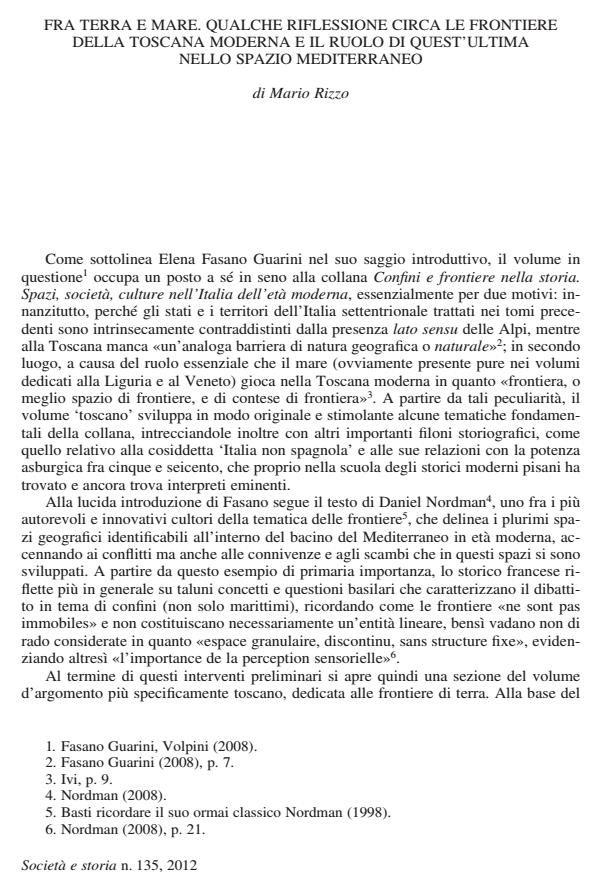A few remarks about the frontiers of early modern Tuscany and their role in the Mediterranean space
Journal title SOCIETÀ E STORIA
Author/s Mario Rizzo
Publishing Year 2012 Issue 2012/135
Language Italian Pages 6 P. 183-188 File size 429 KB
DOI 10.3280/SS2012-135010
DOI is like a bar code for intellectual property: to have more infomation
click here
Below, you can see the article first page
If you want to buy this article in PDF format, you can do it, following the instructions to buy download credits

FrancoAngeli is member of Publishers International Linking Association, Inc (PILA), a not-for-profit association which run the CrossRef service enabling links to and from online scholarly content.
The volume analyses the multifarious boundaries of modern Tuscany - land and sea frontiers, internal and external borders, civil and ecclesiastical, as well as economic and cultural boundaries -, showing their complex interactions and correlating them with wider historical and geographical contexts, such as the intricate Mediterranean theatre and the Spanish imperial system. Far from being the exclusive outcome of state activity, the making and controlling of boundaries were profoundly affected by the actions of sundry peripheral actors as well, thus revealing a fairly scattered structure of power across Tuscan society and territory - which in any case does not imply playing down the role of the state. The border appears as a living entity, conceived not as a continuous, clear-cut, and unchanging line, but rather as a granular and discontinuous space, often resulting from a long and complicated historical process.
Keywords: Modern Tuscany; Mediterranean; boundaries; Spanish Empire
- Quale storia della società? Uno sguardo sull'epoca moderna Paola Bianchi, in SOCIETÀ E STORIA 178/2023 pp.711
DOI: 10.3280/SS2022-178005
Mario Rizzo, Fra terra e mare. qualche riflessione circa le frontiere della Toscana moderna e il ruolo di quest’ultima nello spazio mediterraneo in "SOCIETÀ E STORIA " 135/2012, pp 183-188, DOI: 10.3280/SS2012-135010